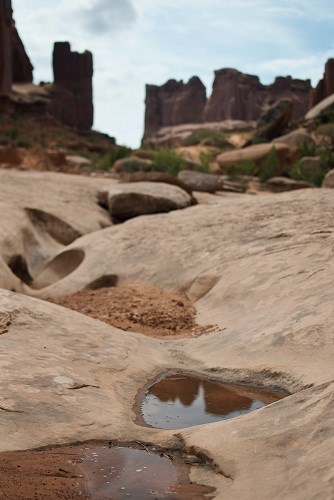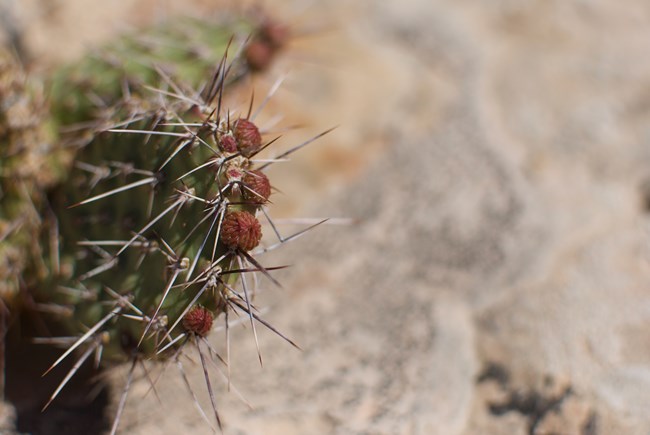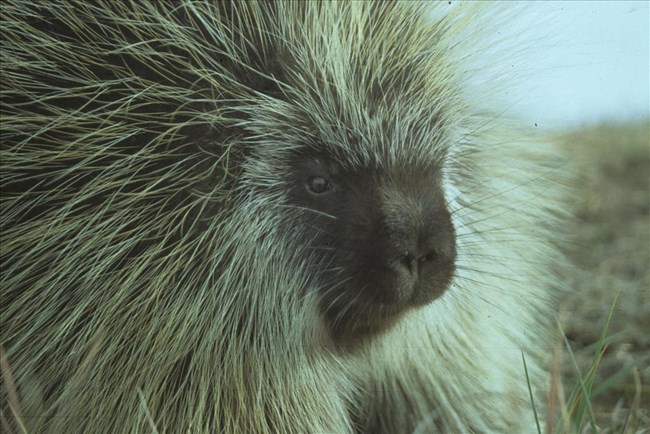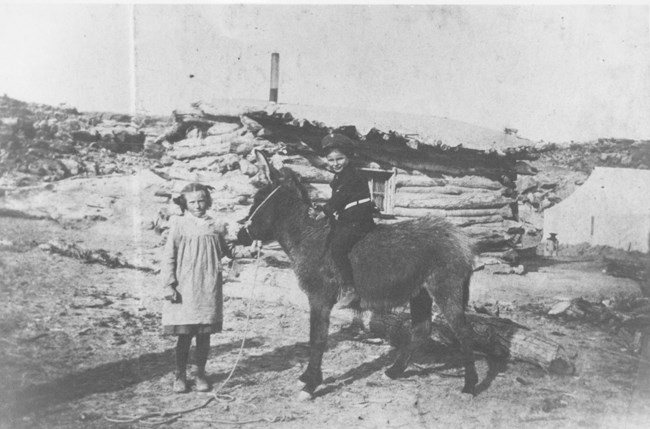Last updated: October 24, 2020
Article
Desert Plotholes

NPS/Evelyn Tewksbury
Each of these three stories from Arches National Park are missing some important words. Fill in the blanks in the stories to create fun new ones. Choose words from each of the following categories and plug them into each story to complete the activity. Read aloud with friends and family, chuckle, and repeat!
Create your own Desert Plothole story
Step 1: Pick words for each category
- Plural animal
- verb (an action word)
- number greater than 1
- location
- food
- plural sharp object
Step 2: Substitute your words into one (or more!) of these stories
See Arches' story
See Arches' story
See Arches' story
Step 3: Share your results
Bonus: Get the story straight and find out Arches National Park's answers to these stories

NPS/Evelyn Tewksbury
Revealed: Cactus Makes Spur-fect
There are over 550 species of plants found in Arches National Park. One of these iconic desert plants is the prickly pear cactus. Instead of leaves, they grow many spines to protect them from hungry herbivores like packrats and bighorn sheep. We can’t blame these critters for wanting a taste though! Prickly pears grow delicious fruits that taste like a mix of strawberry and watermelon. Whether you see their lovely blooms in late spring or accidentally step on one and feel their sharp spines, these plants are pretty unforgettable.

NPS
Revealed: Making Some Good Points
Many people don’t realize that porcupines live in Arches National Park. They climb up trees, as high as 30 feet! These pokey animals are most active at night, due to the desert heat. Porcupines are herbivores and mainly eat the plants around them. Despite popular belief, they do not actually shoot spines out of their body.

NPS
Revealed: Back at the Ranch...
122 years ago, John Wesley Wolfe moved from Ohio to the location that is now Arches National Park. He was a smart man, sharp as a tack, and figured the dry desert air would help him heal from a war injury. He grew a big garden and raised some burros at his ranch. His grandchildren, Esther and Ferol, loved to play with the burros, and treated them as pets. Every year, his family would save a watermelon in the cellar as a special treat for Christmas.
